Related Research Articles
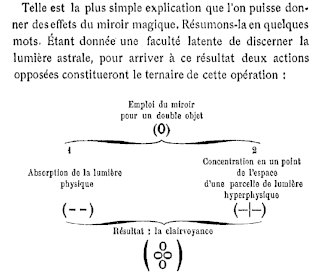
Clairvoyance is the claimed ability to acquire information that would be considered impossible to get through scientifically proven sensations, thus classified as extrasensory perception, or "sixth sense". Any person who is claimed to have such ability is said to be a clairvoyant.
Extrasensory perception (ESP), also known as a sixth sense, or cryptaesthesia, is a claimed paranormal ability pertaining to reception of information not gained through the recognized physical senses, but sensed with the mind. The term was adopted by Duke University botanist J. B. Rhine to denote psychic abilities such as intuition, telepathy, psychometry, clairvoyance, clairaudience, clairsentience, empathy and their trans-temporal operation as precognition or retrocognition.

Parapsychology is the study of alleged psychic phenomena and other paranormal claims, for example, those related to near-death experiences, synchronicity, apparitional experiences, etc. Criticized as being a pseudoscience, the majority of mainstream scientists reject it. Parapsychology has also been criticized by mainstream critics for claims by many of its practitioners that their studies are plausible despite a lack of convincing evidence after more than a century of research for the existence of any psychic phenomena.
Parapsychology is a field of research that studies a number of ostensible paranormal phenomena, including telepathy, precognition, clairvoyance, psychokinesis, near-death experiences, reincarnation, and apparitional experiences.

Telepathy is the purported vicarious transmission of information from one person's mind to another's without using any known human sensory channels or physical interaction. The term was first coined in 1882 by the classical scholar Frederic W. H. Myers, a founder of the Society for Psychical Research (SPR), and has remained more popular than the earlier expression thought-transference.
Precognition is the purported psychic phenomenon of seeing, or otherwise becoming directly aware of, events in the future.

A ganzfeld experiment is an assessment used by parapsychologists that they contend can test for extrasensory perception (ESP) or telepathy. In these experiments, a "sender" attempts to mentally transmit an image to a "receiver" who is in a state of sensory deprivation. The receiver is normally asked to choose between a limited number of options for what the transmission was supposed to be and parapsychologists who propose that such telepathy is possible argue that rates of success above the expectation from randomness are evidence for ESP. Consistent, independent replication of ganzfeld experiments has not been achieved, and, in spite of strenuous arguments by parapsychologists to the contrary, there is no validated evidence accepted by the wider scientific community for the existence of any parapsychological phenomena. Ongoing parapsychology research using ganzfeld experiments has been criticized by independent reviewers as having the hallmarks of pseudoscience.
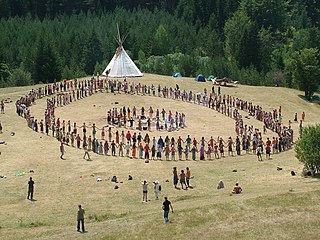
Remote viewing (RV) is the practice of seeking impressions about a distant or unseen subject, purportedly sensing with the mind. A remote viewer is expected to give information about an object, event, person, or location hidden from physical view and separated at some distance. Physicists Russell Targ and Harold Puthoff, parapsychology researchers at Stanford Research Institute (SRI), are generally credited with coining the term "remote viewing" to distinguish it from the closely related concept of clairvoyance. According to Targ, the term was first suggested by Ingo Swann in December 1971 during an experiment at the American Society for Psychical Research in New York City.
The Global Consciousness Project is a parapsychology experiment begun in 1998 as an attempt to detect possible interactions of "global consciousness" with physical systems. The project monitors a geographically distributed network of hardware random number generators in a bid to identify anomalous outputs that correlate with widespread emotional responses to sets of world events, or periods of focused attention by large numbers of people. The GCP is privately funded through the Institute of Noetic Sciences and describes itself as an international collaboration of about 100 research scientists and engineers.

Helmut Schmidt was a German-born physicist and parapsychologist whose experiments on extrasensory perception were widely criticized for machine bias, methodological errors and lack of replication. Critics also noted that necessary precautions were not taken to rule out the possibility of fraud.
Dean Radin investigates phenomena in parapsychology. Following a bachelor and master's degree in electrical engineering and a PhD in educational psychology Radin worked at Bell Labs, as a researcher at Princeton University and the University of Edinburgh, and was a faculty member at University of Nevada, Las Vegas. He then became Chief Scientist at the Institute of Noetic Sciences (IONS) in Petaluma, California, USA, later becoming the president of the Parapsychological Association. He is also co-editor-in-chief of the journal Explore: The Journal of Science and Healing. Radin's ideas and work have been criticized by scientists and philosophers skeptical of paranormal claims. The review of Radin's first book, The Conscious Universe, that appeared in Nature charged that Radin ignored the known hoaxes in the field, made statistical errors and ignored plausible non-paranormal explanations for parapsychological data.
Roger D. Nelson is an American parapsychologist and researcher and the director of the Global Consciousness Project (GCP), an international, multi-laboratory collaboration founded in 1997 which aimed to study collective consciousness. From 1980 to 2002, he was Coordinator of Research at the Princeton Engineering Anomalies Research (PEAR) laboratory at Princeton University. His professional focus was the study of consciousness and intention and the role of the mind in the physical world. His work integrates science and spirituality, including research that is directly focused on numinous communal experiences.

Joseph Banks Rhine, usually known as J. B. Rhine, was an American botanist who founded parapsychology as a branch of psychology, founding the parapsychology lab at Duke University, the Journal of Parapsychology, the Foundation for Research on the Nature of Man, and the Parapsychological Association. Rhine wrote the books Extrasensory Perception and Parapsychology: Frontier Science of the Mind.
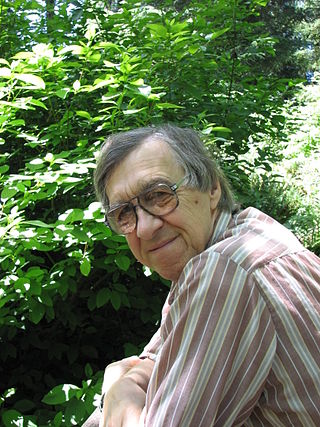
Charles T. Tart is an American psychologist and parapsychologist known for his psychological work on the nature of consciousness, as one of the founders of the field of transpersonal psychology, and for his research in parapsychology.
Robert George Jahn was an American plasma physicist, Professor of Aerospace Science, and Dean of Engineering at Princeton University. Jahn was also a founder of the Princeton Engineering Anomalies Research Lab (PEAR), a parapsychology research program which ran from 1979 to 2007.

Stanley Krippner is an American psychologist and parapsychologist. He received a B.S. degree from the University of Wisconsin–Madison in 1954 and M.A. (1957) and Ph.D. (1961) degrees from Northwestern University.
Sensory leakage is a term used to refer to information that transferred to a person by conventional means during an experiment into extrasensorial perception (ESP).
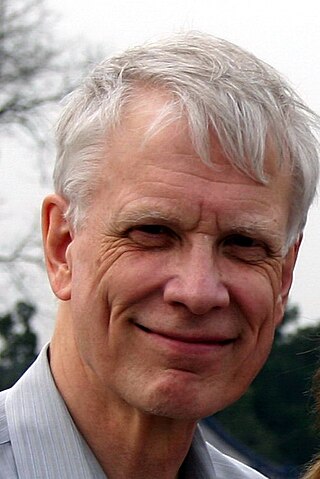
James E. Alcock is Professor emeritus (Psychology) at York University (Canada). Alcock is a noted critic of parapsychology and a Fellow and Member of the Executive Council for the Committee for Skeptical Inquiry. He is a member of the Editorial Board of The Skeptical Inquirer, and a frequent contributor to the magazine. He has also been a columnist for Humanist Perspectives Magazine. In 1999, a panel of skeptics named him among the two dozen most outstanding skeptics of the 20th century. In May 2004, CSICOP awarded Alcock CSI's highest honor, the In Praise of Reason Award. The author of several books and peer reviewed journal articles, Alcock is also an amateur magician and a member of the International Brotherhood of Magicians.
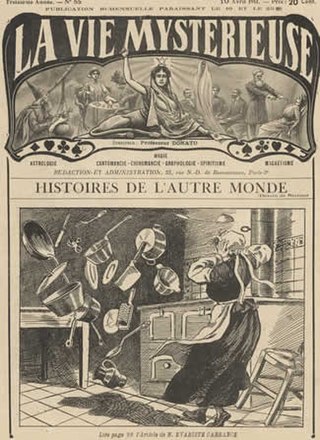
Telekinesis is a hypothetical psychic ability allowing an individual to influence a physical system without physical interaction. Experiments to prove the existence of telekinesis have historically been criticized for lack of proper controls and repeatability. There is no reliable evidence that telekinesis is a real phenomenon, and the topic is generally regarded as pseudoscience.

Extrasensory Perception is a 1934 book written by parapsychologist Joseph Banks Rhine, which discusses his research work at Duke University. Extrasensory perception is the ability to acquire information shielded from the senses, and the book was "of such a scope and of such promise as to revolutionize psychical research and to make its title literally a household phrase".
References
- 1 2 Pigliucci, Massimo (2010-05-15). Nonsense on Stilts: How to Tell Science from Bunk. University of Chicago Press. p. 77. ISBN 9780226667874.
- ↑ Hopkins, Peter L. (2002-04-11). "Princeton studies mind reading - or did you already know that?". The Harvard Crimson . Retrieved 2014-12-03.
- ↑ "Experiments". princeton.edu. Princeton Engineering Anomalies Research.
- ↑
- Burnett, D. Graham (Summer 2009). "Games of chance". Cabinet . No. 34 Testing.
- 1 2 3 Carey, Benedict (2007-02-10). "A Princeton lab on ESP plans to close its doors". The New York Times .
- ↑ Shallit, Jeffrey (2006-11-19). "The PEAR has finally rotted". Recursivity. Blogger . Retrieved 2014-12-05.
- ↑ "Princeton to close ESP lab". USA Today . Associated Press. 2007-02-11. Retrieved 2014-12-05.
- ↑ Reed, J.D. (2003-03-09). "Mind over matter". The New York Times .
- 1 2 3 4 5 Carroll, Robert Todd (2013-04-16). "The Princeton Engineering Anomalies Research (PEAR)". The Skeptic's Dictionary (online ed.).
- ↑ Merolla, Lisa (2007-02-23). "'Pseudoscience' lab closes at Princeton". The Daily Free Press . Boston.
- ↑ Pigliucci 2010, p. 79.
- 1 2 Alcock, James. (1988). A Comprehensive Review of Major Empirical Studies in Parapsychology Involving Random Event Generators and Remote Viewing. In Commission on Behavioral and Social Sciences and Education, Enhancing Human Performance: Issues, Theories and Techniques, Background Papers. Washington, D.C.: National Academy Press. pp. 638-646.
- 1 2 Jeffers, Stanley (May–June 2006). "The PEAR proposition: Fact or fallacy?". Skeptical Inquirer . 30 (3). Retrieved 2014-01-24.
- ↑ Hansel, C.E.M. (1989). The Search for Psychic Power. Prometheus Books. pp. 187–95. ISBN 978-0879755164.
- ↑ Rothman, Milton A. (1992). The Science Gap: Dispelling the Myths and Understanding the Reality of Science. Prometheus Books. pp. 81-82. ISBN 1-59102-164-2
- ↑ Alcock, James. (2003). Give the Null Hypothesis a Chance: Reasons to Remain Doubtful about the Existence of Psi Archived 2007-08-10 at the Wayback Machine . Journal of Consciousness Studies 10: 29-50.